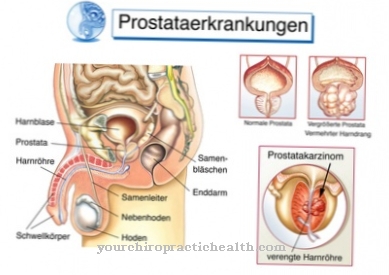The Occupational medicine as a branch of medical science deals with the interactions between health and work. It is still a very young branch of medicine, because the effects of occupational stress were by no means as present in earlier generations as they are today.
What is occupational medicine?

Industrial medicine pays special attention to work-related health problems that can occur in any profession today. Company doctors see not only physical damage to health through work, but increasingly also mental disorders that can result directly from the work environment of a person concerned.
Bullying or burnout are anglicisms that are firmly anchored in linguistic usage today when it comes to describing mental illness in the workplace. But classic occupational diseases such as silicosis, asbestosis or back or joint diseases also play a role. Occupational medicine defines itself not only as a branch of medicine in order to diagnose occupational restrictions due to work, but above all in order to avoid them.
Company physicians also operate in-house health prophylaxis in order to maintain the health of the company's employees as well as possible. Many companies have recognized the problem and offer appropriate prevention programs, for example in the form of back training, yoga courses or relaxation exercises during working hours. The legal requirements for occupational medicine must be implemented in the company by the company. From a certain company size, a company physician must be on site to carry out the regularly prescribed occupational medical examinations on employees.
Treatments & therapies
In Germany there is a medical training to become a company physician; it is a specialist training course with the title of specialist in company medicine. Occupational doctors take care of the concerns, complaints and illnesses of employees in the companies. However, only those health disorders that could be related to work in any way are of concern within the company.
Due to their training, occupational physicians can usually quickly assess whether a health disorder is operational or not. If there are occupational diseases, occupational physicians also prepare corresponding reports for an employee, for example when it comes to the question of early retirement before the official retirement age. Accident prevention is also subject to the guidelines of company medicine. If an occupational physician has identified the main areas of accidents, an employer must take appropriate measures to eliminate these weak points. If this does not happen and an employee is harmed by the negligent behavior of the company, he is entitled to a claim for damages.
Occupational medicine serves to maintain the productivity of employees and the early detection of damage to health that could negatively affect this performance. As a rule, company doctors take holistic physical, psychological and psychosocial aspects of employees into account. Work-related illnesses are to be avoided and health in the workplace promoted. Employees should be informed about health risks and the effects of hazardous substances in the workplace.
Measures to improve the health situation in the workplace are subjected to an efficiency control by occupational medicine. Occupational medicine is also included in these topics when new workplaces are planned or work equipment or devices are to be procured. The company physician can work towards the purchase of seating furniture that is as ergonomic as possible or special protective equipment.
Working hours, break regulations, work rhythm, workplace design, optimization of work processes are also important aspects of occupational medicine. Diving and aviation medicine are two special aspects of occupational medicine that deal on the one hand with the effects of water on the human body and on the other hand with the effects on the body during a flight.
You can find your medication here
➔ Medicines for relaxation and nerve strengtheningDiagnosis & examination methods
Due to his medical training, all common medical examination methods are also available to the occupational physician. Occupational medical examinations, however, have some typical specifics that are essential for uncovering operational health problems. The defined examination and treatment procedures include, in particular, preventive medical examinations in accordance with legal provisions.
With every occupational medical check-up, these include a comprehensive blood test, an overview of the lungs, a comprehensive physical examination and individual occupational medical advice. In order to comply with this legally prescribed procedure, the employees are regularly invited by the employer to the occupational medical examinations. Participation in the company medical examination is mandatory for employees. A refusal without a valid reason can even lead to a warning or dismissal because an employer would then grossly violate his duty of care. Company physicians, usually at the request of the employee, take a personal and close look at his workplace.
With the understanding of the work process gained in this way, the occupational physician can prepare risk analyzes and workplace assessments. Advice on ergonomic work design can also take place. Ergometry, pulmonary function tests and the assessment of hearing and vision using simple technical equipment are also part of the standard of every occupational medical examination. For many employees, however, the occupational physician is also an important and competent point of contact outside of the regular examination appointments if health restrictions and problems suddenly arise in the workplace.
Like all doctors, the company physician is subject to a duty of confidentiality, and in particular is not allowed to pass on any information about the health of employees to the employer. Assessment of measurement results of various working environment factors, e.g. noise, climatic variables, lighting or hazardous substances, are also often the subject of occupational health examinations. Noise pollution at the workplace in particular is an enormous health hazard for many employees.













.jpg)

.jpg)
.jpg)











.jpg)